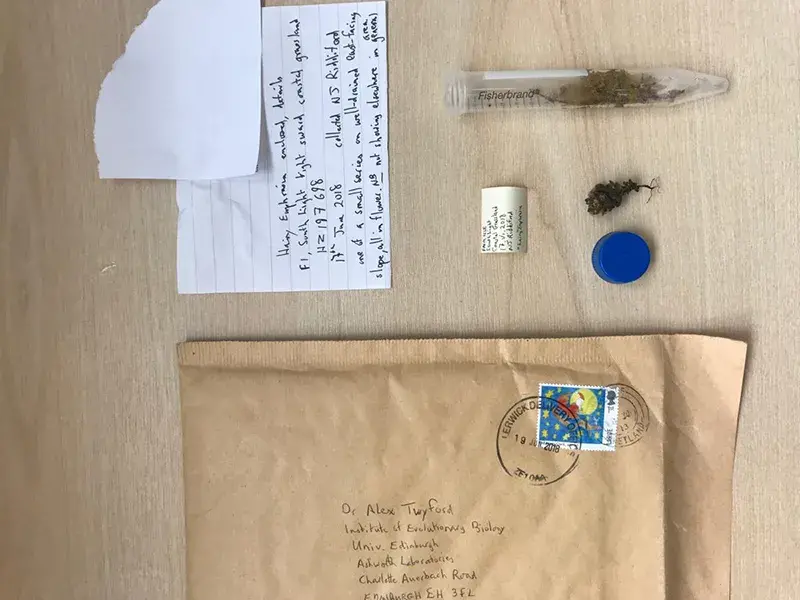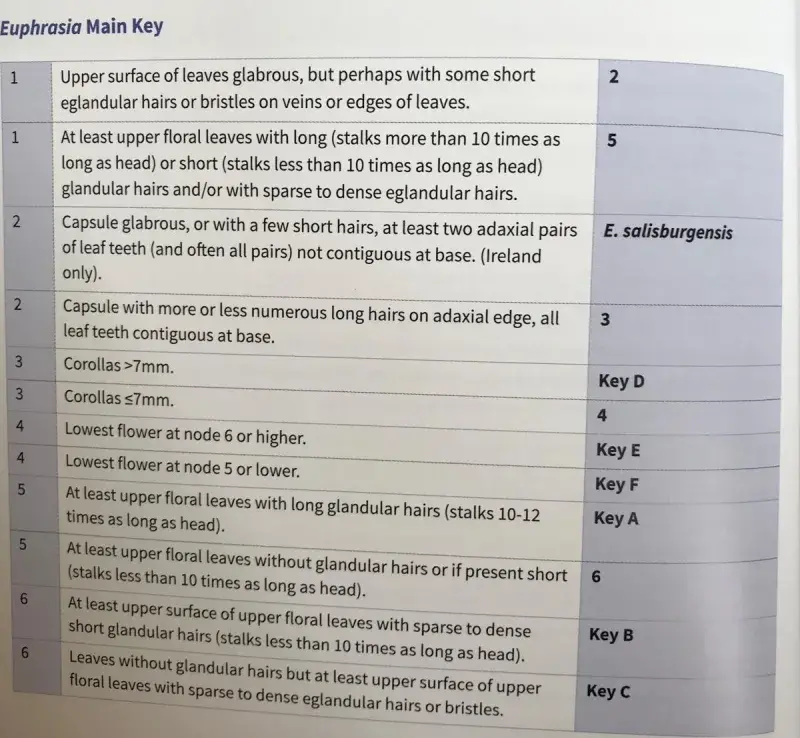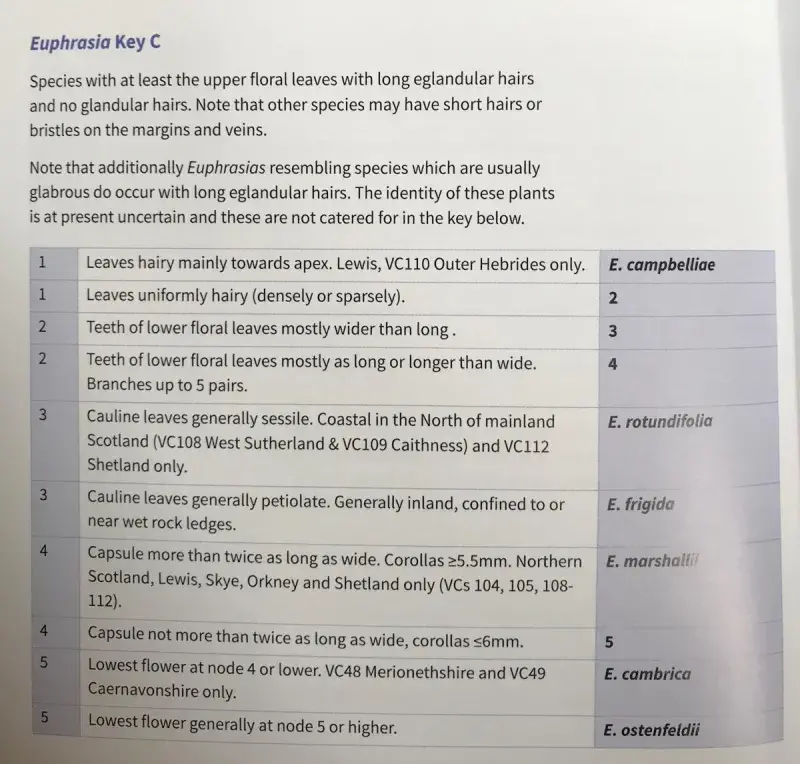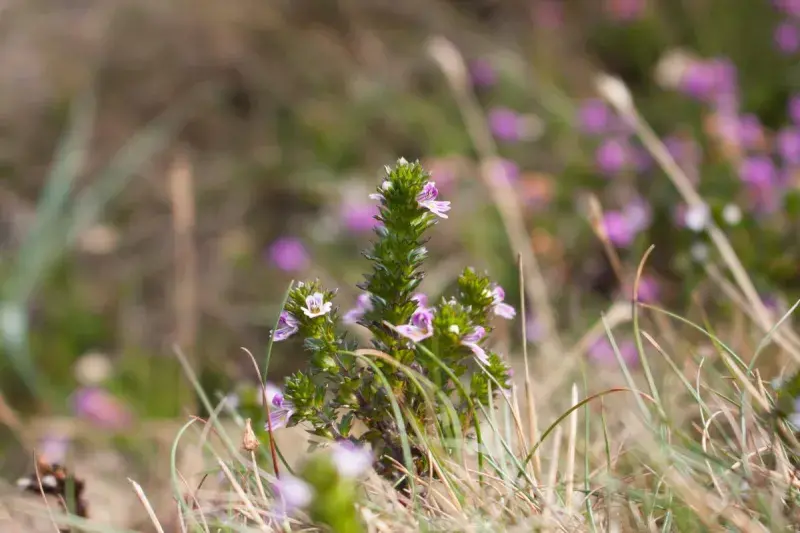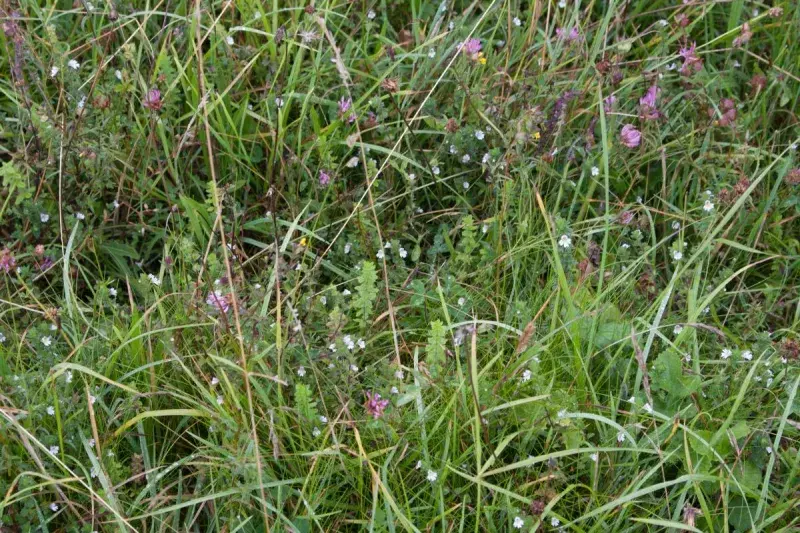An introduction to Euphrasia ID: diploids vs tetraploids
Alex Twyford. 29th January 2018.
Many botanists I know refuse to identify Euphrasia as they consider them too difficult. I can’t think of another plant group of a similar size that attracts such negativity from field botanists. But while individual species identification can be difficult, learning the basic species groupings and the informative characters is surprisingly easy, and can get you a long way towards understanding the plant in front of you. Once you’ve finally got your eye in, Euphrasia are an extremely rewarding group of plants to work with.
The simplest and most important division of Euphrasia species in Great Britain and Ireland is between diploids and tetraploids. While there are other ploidy levels elsewhere in the world, in the UK we only have two. Fortunately for us, these different ploidy groups are divergent, and likely represent different waves of colonization from ancient continental ancestors, and as such they’re surprisingly distinct.
Diploids, with 2n=22 chromosomes, possess long glandular hairs, and the stalk of the hairs are often 10-times longer than the head of the hair. You can see these hairs in the field with a hand lens, and even without a lens these species still appear distinctly hairy. These hairs may be retained on dry specimens, but may also become damaged over time.
Tetraploids, with 2n=44 chromosomes, don’t have long glandular hairs. They may however, have some eglandular short hairs or bristles, or are glabrous.
Starting with this single, relatively easy character, you can reliably distinguish between diploids and tetraploids. In terms of species, the tetraploids include the widespread species E. arctica, and the often purple-flowered moorland E. micrantha, while the diploids include species such as the rather robust looking downland E. anglica. Getting to the species-level is usually relatively easy for the diploids, while identifying the tetraploids needs more care and attention.
Are there exceptions to the diploid vs tetraploid hair character? Unfortunately, yes, but these are rare. Some of these may be cases where diploids hybridise with tetraploids, giving rise to some fascinating plants that combine characters from the two ploidy levels. These warrant their own blog post.
I commonly get asked why chromosome number is associated with different hair types. The answer isn’t clear, but is almost certainly nothing to do with chromosome number per se. While chromosome duplication can change morphology, it tends to increase the size of characters rather than introducing new characters. What’s more likely is that different hair types evolved in species with different ploidies in continental Europe before they invaded the UK.
I’d encourage you to get out next season and look for diploids and tetraploids, even if you can’t get to species-level just yet.


